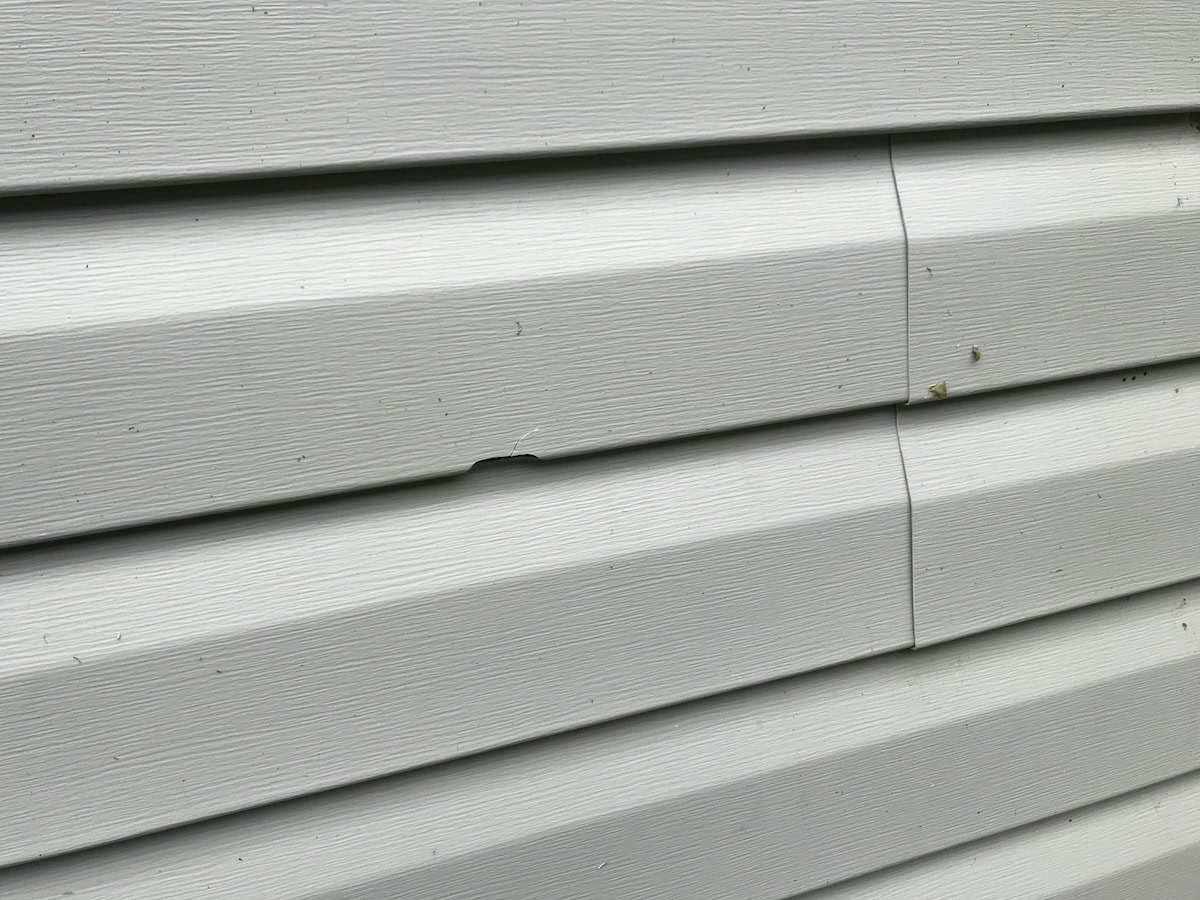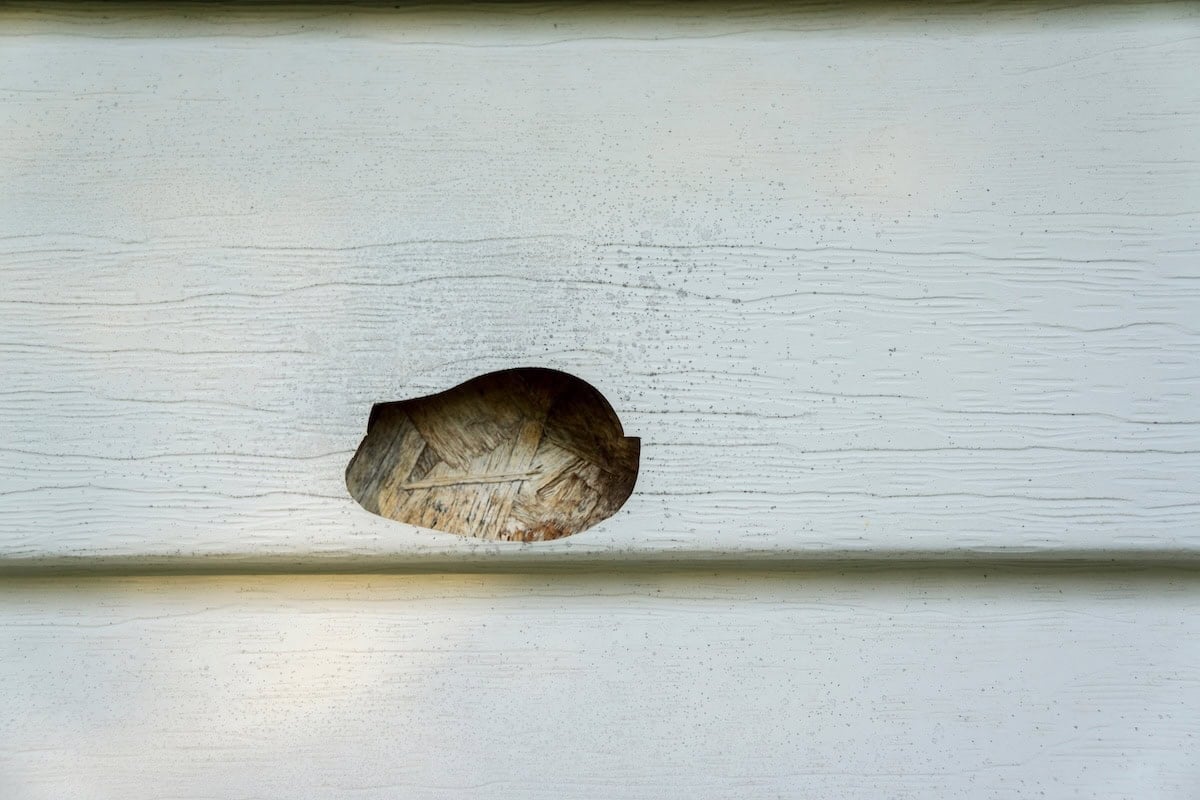After a severe storm passes through your area, you might wonder if your home’s siding has suffered damage. Hail damage siding can be tricky to identify, especially if you don’t know what signs to look for. Many homeowners miss subtle indicators that could lead to costly repairs down the road.
This comprehensive guide will walk you through everything you need to know about identifying hail damage on different types of siding. We’ll cover the telltale signs to look for, when to call professionals for an inspection, and how to work with your insurance company to get the repairs you need. You’ll also learn about the repair process and steps you can take to prevent future storm damage.
🤔 Understanding Hail Damage and Its Impact on Siding

Hail forms when strong updrafts in thunderstorms carry raindrops high into the atmosphere where they freeze. These ice balls can range from pea-sized to as large as softballs, with larger hailstones causing significantly more damage to your home’s exterior.
How Hail Damages Different Siding Materials
The impact of hail on your siding depends on several factors, including the size and density of the hailstones, wind speed, and the type of siding material protecting your home. Each siding material responds differently to hail impact:
- Vinyl siding can crack, chip, or develop holes when struck by hail. The material may also become loose or warped from the impact.
- Wood siding typically shows dents, gouges, or split sections after a hailstorm. The natural grain of wood can help absorb some impact, but larger hailstones can cause significant damage.
- Aluminum siding dents easily under hail impact and may show puncture marks from sharp ice fragments.
- Fiber cement siding is more durable than other materials but can still crack or chip when hit by large hailstones.
Visual Signs of Hail Damage on Siding
Recognizing hail damage requires careful inspection of your home’s exterior. Some damage is immediately obvious, while other signs are more subtle and require closer examination.
- Check for visible damage like dents, cracks, or paint chips, especially lighter-colored marks on painted surfaces.
- Inspect up close for subtle indentations that may not be visible from a distance but can still weaken your siding over time.
- Look for random dent patterns, which often indicate hail impact, and use the size and depth of marks to gauge hailstone size.
🔎 7 Ways To Spot Hail Damage Siding

Here are the most reliable methods for identifying hail damage on your home’s siding:
1. Perform a Ground-Level Visual Inspection
Start your assessment by walking around your home’s perimeter. Look up at your siding from different angles, paying particular attention to areas that would have been exposed to the storm. Use binoculars if needed to examine higher sections of your home safely.
2. Check for Dents and Impact Marks
Run your hands along accessible sections of siding to feel for dents that might not be visible. Fresh hail damage often creates circular or irregular depressions in the material. These dents may be shallow but can still indicate compromised siding integrity.
3. Look for Cracks and Splits
Examine your siding for hairline cracks or larger splits. These often occur along the edges of siding panels or at connection points. Fiber cement and wood siding are particularly susceptible to cracking from hail impact.
4. Inspect Paint and Finish Damage
Fresh chips in paint or protective coatings often indicate recent hail damage. Look for areas where the underlying material is exposed. This type of damage can lead to moisture infiltration and accelerated deterioration if not addressed promptly.
5. Examine Siding Joints and Connections
Pay special attention to areas where siding panels connect or overlap. Hail impact can cause these joints to separate or become misaligned, creating gaps that allow water penetration.
6. Document Damage with Photos
Take clear photographs of any suspected damage from multiple angles. Include reference objects in your photos to show the scale of the damage. This documentation will be valuable when working with insurance companies and contractors.
7. Compare Damaged and Undamaged Areas
Look for differences between sections of your siding that may have been protected from the storm and those that were fully exposed. This comparison can help confirm that storm damage occurred and wasn’t caused by other factors.
👨🔧 When to Call Professional Inspectors
While homeowners can identify obvious hail damage, professional inspection is often necessary for a complete assessment. Roofing and siding professionals have the experience and tools needed to spot subtle damage that untrained eyes might miss.
Safety Considerations for DIY Inspection
Never climb ladders or attempt to access your roof during your initial damage assessment. Many homeowners are injured each year trying to inspect storm damage themselves. Professional contractors have the proper equipment and training to safely inspect elevated areas of your home.
Focus your personal inspection on areas you can safely reach from ground level. Leave the detailed assessment of hard-to-reach areas to qualified professionals who can perform the work safely.
What Professional Inspectors Look For
Professional inspectors examine your siding systematically, checking every panel and connection point. They understand how different siding materials respond to hail damage and can identify problems that might not be apparent to homeowners.
These experts also coordinate their siding inspection with roof and gutter assessments, providing a comprehensive evaluation of your home’s storm damage. This thorough approach ensures that all damage is identified and properly documented for insurance claims.
Getting Multiple Professional Opinions
Consider getting inspections from multiple qualified contractors, especially if you’re planning to file an insurance claim. Different professionals might notice different aspects of the damage, giving you a more complete picture of the repairs needed.
Make sure any contractors you work with are licensed, insured, and have experience with storm damage assessment. Check their credentials and ask for references from recent storm damage projects.
📑 Working with Insurance Companies

Most homeowner’s insurance policies cover hail damage siding repairs, but the claims process requires proper documentation and communication with your insurance company.
Documenting Damage for Insurance Claims
Your insurance company will need clear evidence that storm damage occurred. Take photographs of all damage before making any temporary repairs. Keep detailed records of when the storm occurred and any professional assessments you’ve received.
Create a written inventory of damaged areas, including the location, size, and type of damage observed. This documentation supports your claim and helps ensure you receive appropriate compensation for repairs.
Understanding Your Coverage
Review your homeowner’s insurance policy to understand what storm damage is covered and what your deductible requirements are. Some policies have separate deductibles for storm damage that may be higher than your standard deductible.
Contact your insurance company as soon as possible after discovering hail damage. Many insurers have time limits for filing storm damage claims, and prompt reporting can help expedite the process.
Working with Insurance Adjusters
Insurance adjusters will inspect your property to verify the damage and determine repair costs. Be present during this inspection to point out all damage you’ve identified. Professional contractor assessments can support your claim by providing expert opinions on the extent of damage.
Don’t accept the first settlement offer if you believe it doesn’t adequately cover your repair needs. You have the right to dispute claim decisions and provide additional evidence to support your case.
🏠 Trust K&D Roofing for Your Storm Damage Needs
When it comes to repairing hail-damaged siding, you need a team you can count on to deliver exceptional results. At K&D Roofing, we combine years of experience, industry-leading certifications, and a dedication to outstanding service to ensure your home is restored to its best condition. Our licensed general contractors and GAF Master Elite certification guarantee the highest standards of workmanship, and our streamlined insurance claims process makes it easy to get the coverage you deserve.
With countless satisfied homeowners across Raleigh praising our professionalism, communication, and attention to detail, it’s clear why K&D Roofing is the trusted choice for storm damage repairs. Don’t take chances with your home’s protection—contact K&D Roofing today for a free inspection and let us provide the quality repairs and peace of mind you deserve. Your home is in safe hands with us!

